|
Special Session
Highlights of the Joint Annual Meeting ISMRM-ESMRMB |
Special Session: Highlights of the Joint Annual Meeting ISMRM-ESMRMB
Oral
Thursday, 21 June 2018
| Plenary Hall (Paris Room) |
11:15 - 11:45 |
Moderators: Julien Cohen-Adad, Jessica Dubois |
11:15
|
1087.
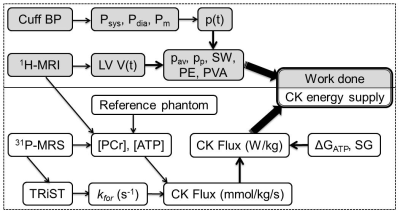 |
 Creatine kinase energy supply correlates with mechanical work and efficiency in healthy and failing human heart: a combined noninvasive MRI/MRS study Creatine kinase energy supply correlates with mechanical work and efficiency in healthy and failing human heart: a combined noninvasive MRI/MRS study
Refaat Gabr, AbdEl-Monem El-Sharkawy, Michael Schär, Gary Gerstenblith, Robert Weiss, Paul Bottomley
It is hypothesized that chemical energy supply is insufficient to fuel normal mechanical pump function in heart failure (HF). To test whether reduced function correlates with reduced energy supply, we used magnetic resonance spectroscopy and imaging to measure adenosine triphosphate (ATP) synthesis via the creatine kinase reaction–the heart’s primary reserve–and cardiac mechanical stroke work in 14 healthy subjects and 27 patients with mild-to-moderate HF. We found significantly reduced cardiac creatine kinase flux that correlated with peak and average stroke work rates and with mechanical efficiency. These first noninvasive findings are consistent with the energy deprivation hypothesis of HF.
|
11:21
 |
1088.
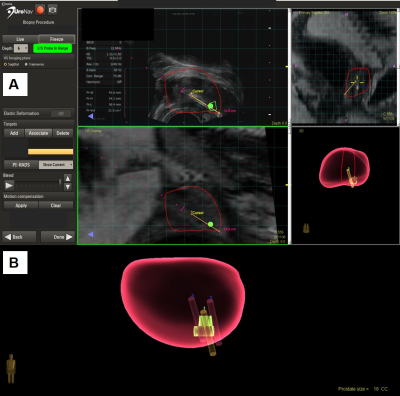 |
 Metabolomic Evaluations of Human Prostate Tissue from mp-MRI/US Fusion Biopsy Metabolomic Evaluations of Human Prostate Tissue from mp-MRI/US Fusion Biopsy
Lindsey Vandergrift, Taylor Fuss, Yannick Berker, Shulin Wu, Chris Dietz, Felix Ehret, Sarah Dinges, Edouard Nicaise, Piet Habbel, Johannes Nowak, Chin-Lee Wu, Adam Feldman, Leo Cheng
Heterogeneity and clinical insignificance of prostate cancer (PCa) lesions challenges diagnosis and management. Introduction of the multi-parameter (mp)-MRI/ultrasound fusion-guided biopsy increased detection of clinically significant cancer. Prostate MRI lesions receive a PI-RADS score based on likelihood of being cancer-positive. Fusing MRI images with live ultrasound guides biopsy from the targeted area. Previously, PI-RADS score has been correlated with clinical significance of cancer and morphological variations in PCa lesions. We studied PI-RADS score according to tissue MRS-based metabolomics. Metabolic differences between Target and Non-target cores, regardless if Targets were cancer-positive, support the assumption that targeted areas fundamentally differ from non-targeted areas.
|
11:27
 |
1089.
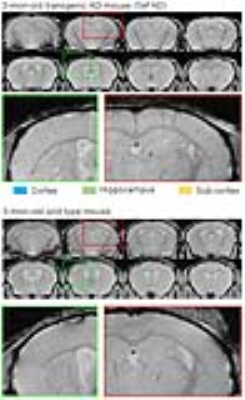 |
 In vivo MRI detection of early ß-amyloid pathologies targeted by curcumin-conjugated magnetic nanoparticles In vivo MRI detection of early ß-amyloid pathologies targeted by curcumin-conjugated magnetic nanoparticles
Celia Dong, Anthea To, Eddie Wong, Ed Wu
Early state β-amyloid oligomers (AβOs) and late stage Aβ plaques are the pathological hallmarks of Alzheimer's disease (AD) brains, and they can be targeted by curcumin. We have recently designed and synthesized a new curcumin-conjugated magnetic nanoparticles (Cur-MNPs) to target these Aβ pathologies. In this study, we aimed to assess this novel Cur-MNPs based MRI contrast agent for its in vivo ability to detect and visualize the Aβ pathologies during both very early and late stage of AD progression in AD mouse models.
|
11:33
|
1090.
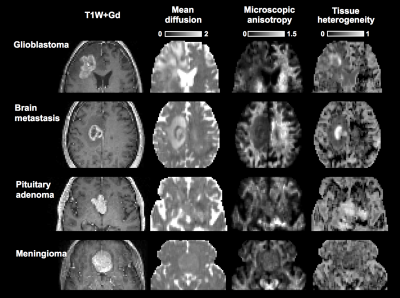 |
 Tensor-valued diffusion MRI in under 3 minutes: An initial survey of microscopic anisotropy and tissue heterogeneity in four brain tumor types Tensor-valued diffusion MRI in under 3 minutes: An initial survey of microscopic anisotropy and tissue heterogeneity in four brain tumor types
Markus Nilsson, Filip Szczepankiewicz, Carl-Fredrik Westin, Alexandra Golby, Danielle van Westen, Pia Sundgren
Microscopic diffusion anisotropy and tissue heterogeneity are two independent features of tumor microstructure that can be probed by diffusion MRI but only by using so-called b-tensor encoding. These independent features reflect cell shapes and cell density variance in tumors. Here, we demonstrate high-quality maps of these features, derived from data acquired in only 3 minutes, in patients with various brain tumor histologies. Several remarkable features were observed which suggest that the maps may contribute valuable diagnostic information, in particular since the features vary both within and between tumors.
|
11:39
 |
1091.
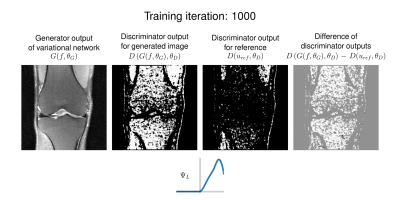 |
 Variational Adversarial Networks for Accelerated MR Image Reconstruction Variational Adversarial Networks for Accelerated MR Image Reconstruction
Kerstin Hammernik, Erich Kobler, Thomas Pock, Michael Recht, Daniel Sodickson, Florian Knoll
Inspired by variational networks and adversarial training, we introduce variational adversarial networks for accelerated MR image reconstruction to overcome typical limitations of using simple image quality measures as loss functions for training. While simple loss functions, such as mean-squared-error and structural similarity index, result in low resolution and blurry images, we show that the proposed variational adversarial network leads to sharper images and preserves fine details for clinical low and high SNR patient data.
|
|
| Back |
| The International Society for Magnetic Resonance in Medicine is accredited by the Accreditation Council for Continuing Medical Education to provide continuing medical education for physicians. |







